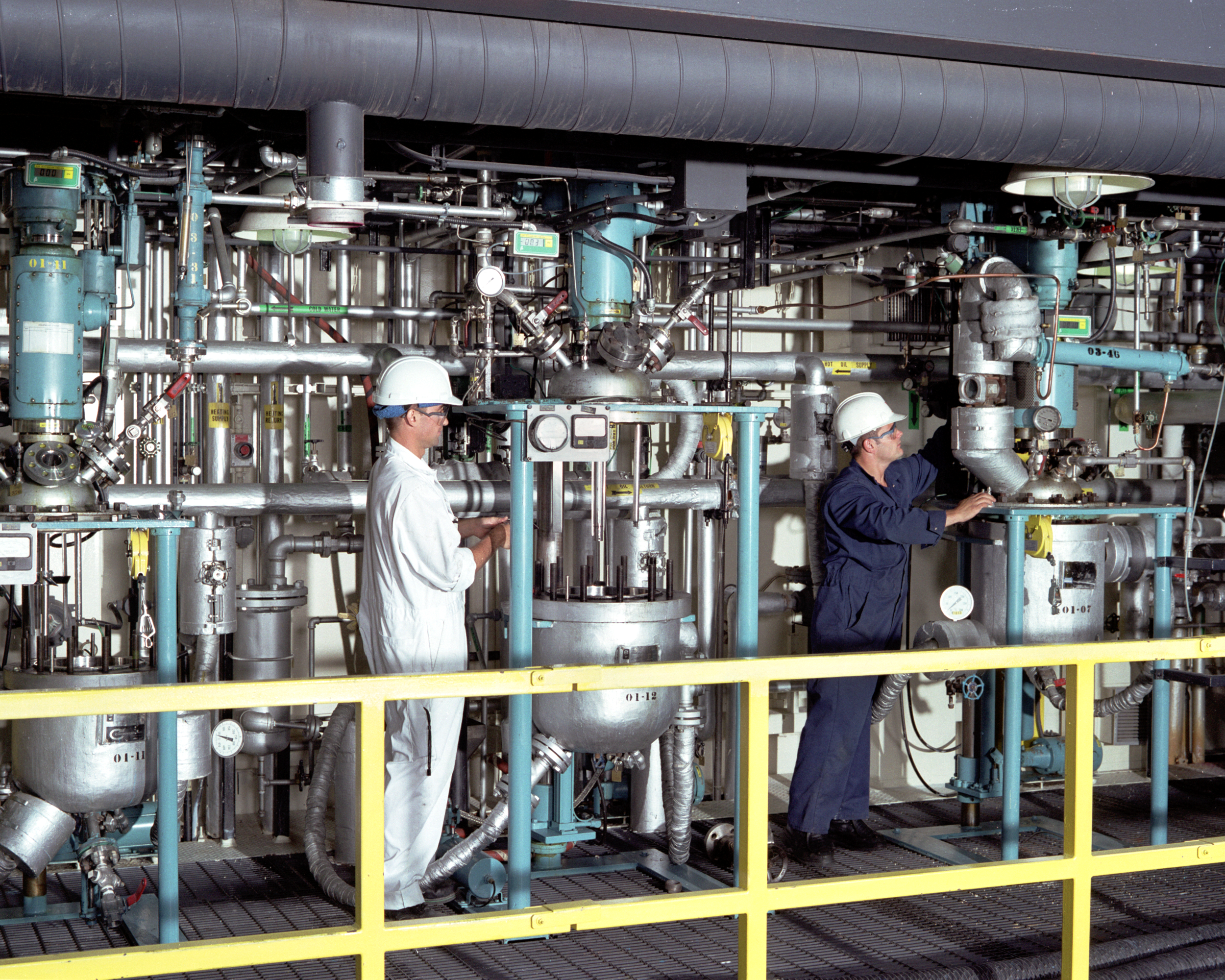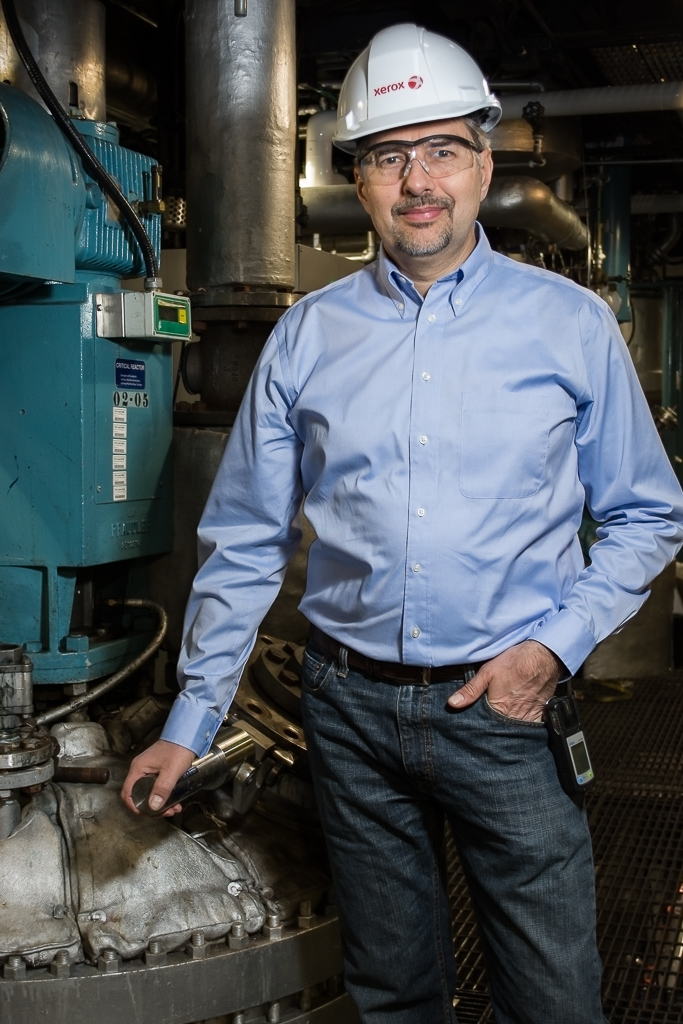The following post was prepared by Xerox Research Centre of Canada, based off an interview with Marko Saban, Director of Engineering, to learn how his team of engineers helps clients bridge the gap between the lab and the real world.
How long have you been directing engineering at the Xerox Research Centre of Canada (XRCC)?
I’ve been in my present role since April 2013. Prior to that, I’ve been managing XRCC’s Process Engineering Area for almost 14 years. On July 1, 2016, I celebrated my 25th anniversary with XRCC – I cannot believe how fast the time flies!
I understand that XRCC has undergone some significant changes over the past three years. Has your job changed too?
Yes, my job has changed significantly over the past three years. In addition to having a world mandate for delivering new marking materials for the Xerox Corporation, XRCC started offering Client Services three years ago. We engage with a number of clients. For example, we have been collaborating with GreenCentre Canada (GCC) since 2014. We designed and built a Micro Pilot Unit for GCC last year. This mini-pilot plant helps them bring their new proprietary Forward Osmosis desalination technology a step closer to commercialization. We also partner with Battelle Memorial Institute, headquartered in Columbus, OH, the single largest R&D non-profit organization in the US. And, we also provide R&D and engineering services to Authentix, a company based in Addison, TX.
What attracts these companies to XRCC?
Many of them are attracted by our state-of-the-art specialty chemicals Pilot Plant and our process engineering capability. Our Pilot Plant is a unique facility and has played a tremendous role in bridging the gap between a new idea and its commercialization over the past 35 years.
How so?
When a new material idea is reduced to practice and it has shown some commercial promise in testing labs, the product development people usually need to know if the new material can be made in kilogram/tonne quantity, and the business development people want to know how much it would cost to manufacture it. The two questions go hand-in-hand. One requires a manufacturing process in order to estimate the manufacturing cost. Scaling-up a new material from lab to Pilot Plant helps answer both questions: it produces larger quantity of the material for product development and it helps us define the process for its manufacturing which, in turn, allows us to estimate the unit manufacturing cost. Each Pilot Plant experiment is closely monitored in order to collect as much information as possible using our data acquisition and control system.
This data eventually turns into new material specifications and the Pilot Plant process into a manufacturing process. Unlike commodity materials, specialty materials are tailor-made for the intended application and they have to “fit like a glove”. Our analysis and characterization team as well as our testing team assure that a new specialty material will fit its intended application. Process scale-up is a highly multidisciplinary activity and we have all the right disciplines here at the XRCC, which is a compelling offering.
What if you need a product and not a process?
In that case, we develop a process, scale it up in our Pilot Plant and deliver the product. Some clients want a process, some want a product only, and some want both. Everybody has different needs and we try to accommodate each client individually. Our low-risk engagement process begins with a non-confidential discussion. This is followed by a confidential discussion. Next, a discussion document, or proposal, is prepared and refined. Finally, an agreement is drafted and executed.
What is so unique about the XRCC Pilot Plant?
The short answer is flexibility and efficiency of our operations. Our Pilot Plant is the environment of change. For example, last year we brought in over 30 new processes. During the past 35 years we have completed over 12,700 experiments. Our pilot plant has 28 reactor systems, from 5 gal to 500 gal. About 2/3 of our reactors are made of 316 stainless steel, and about 1/3 are glass-metal reactors, which are useful for corrosive chemistries. Finally, over the past five years we’ve developed a competency in process intensification – converting batch processes into continuous processes.
Why would you want to intensify a process?
Process safety and process economy are the primary reasons. When the process intensification trend started in the chemical process industry about ten years ago its emphasis was on process safety, and now it has evolved into an emphasis on process economy, in addition to process safety. It is well known that most commodity chemicals, like gasoline, are made in continuous plants, so-called refineries since the continuous processing makes the most economic sense. Traditionally, specialty chemicals have been made exclusively in batch. Now, even specialty chemicals processes are being intensified. We recently commissioned several new continuous reactor systems that were designed and built in-house. And we do not just design and build those systems, we also operate them in our state-of-the-art Pilot Plant. In short, process intensification typically lowers the cost of production.
What else is XRCC Pilot Plant known for?
We have a database of over 200 documented processes. Our pilot plant is operated by a team of 10 well-trained operators and is assisted by a team of another 10 process engineers. Our analytical labs are state of the art and our engineering support team makes sure that all 28 reactors systems are always at our disposal. Our engineering toolbox extends well beyond the reactors: we have all the downstream equipment too, plus a lot of specialized equipment for size reduction, washing and drying, etc. For a chemical engineer, this is a dream job: you get to practice everything you have learned in school – unit operations, applied heat and mass transfer, reaction engineering, mixing modelling, process and plant economy, and technology transfer to manufacturing.
What can you do for a client who has invented a new material?
It’s the access to proven expertise and infrastructure that accelerates technology development and commercialization. We can help you bridge the gap between the lab and the real world, which is commercial application. For example, let’s assume that a client wants a new Pilot Plant designed and built for a new material that would involve capital spending. What follows can be described in three steps: Concept, Feasibility and Definition. We would start by comparing several alternatives for addressing the business opportunity. We build on our deep expertise and world-class facilities to develop these alternatives. Once the new plant concept is selected, it is usually captured in a block flow diagram (BFD) that indicates all the process inputs and outputs, process steps, and a preliminary mass balance.
In the next step, the feasibility step, we would be turning these blocks, which engineers call unit operations, into actual equipment that can be assembled into an equipment train. The output is a process flow diagram (PFD) identifying all the major pieces of equipment and streams that would be required for a new plant – this is like a skeleton of a new plant. Sometimes engineering lab work is proposed as part of this step using a design of experiment (DOE) approach. Finally, the piping and instrumentation diagram (P&ID), also known as a mechanical flow diagram, is prepared. Obviously, the level of complexity and detail increases from BFD to P&ID. P&ID drawings contain all the information required to prepare a budget cost estimation for a new plant. And of course, there are other drawings on top such as isometric and 3D drawings that allow us to visualize a new plant digitally.
Would that be the end of the project?
That would be more like an end of the beginning of a project. Those three steps are usually referred to as Front-End Loading (FEL), or FEL 1, FEL 2 and FEL 3 steps. The outcome of the FEL 3 phase, or Define step, is to come up with a budget cost estimation for a new plant that needs to be built, basically a capital cost estimation. After the budget has been authorized, the next phase of a capital intensive project is usually called the EPC phase. EPC stands for Engineering, Procurement and Construction. In this phase even more detailed engineering drawings are put together, all the parts’ specs are defined and then the parts procurement takes place. Finally, after all of the parts are received, they are put together in the Construction phase. We have the capability to carry out both the FEL and the EPC phases of engineering projects. At the end of the EPC phase, a new pilot plant is installed and commissioned for its intended application in a series of dry and wet testing runs. After a safety assessment of standard operating procedures is complete, the new pilot plant is ready for start-up.
What has been your guiding philosophy when it comes to a new process scale-up?
Our guiding philosophy for a new process scale-up is: “scale-down before you scale-up”. This means that a pilot plant process is a scaled-down replica of a manufacturing process, rather than the scaled-up version of a lab process. This makes a big difference in accelerating time-to-market.
What is the most challenging part of your job?
It varies day-to-day. One day it could be engineering of a new process that we’ve never done before. Understanding its underlying principles, or fundamentals, process hazard assessment, reviewing Safety Data Sheets with my team, or reviewing a design of experiment results. Another day it could be searching for new engineering talent, searching for a new piece of equipment, or some other non-technical issue.
What do you mean by a non-technical issue?
This could mean business negotiations or closing a deal on a new client project; or managing and controlling multidisciplinary projects involving our scientists and engineers. In a way, technical and non-technical matters are so intertwined in my job that they form a perfect cocktail. I drink it every day – non-alcoholic, of course.
Why would somebody contact XRCC in the first place?
We are a small and nimble organization, easily accessible and fast to respond, that understands how to take an idea from concept to commercialization. We all wear multiple hats. We have over 50 chemistry and engineering labs and a 27,000 ft2 Pilot Plant. We have a long history of bringing new ideas to commercial application. If you have an idea for a new material or a process, regardless of the size of the molecule, we probably have a way to develop a scalable process for its manufacturing. It could be batch or it could be continuous process. We can come up with a new concept or use client’s concept. We can run feasibility tests in our labs or we can collaborate with clients and build on their results to pilot the process faster. Intellectual Property terms are determined on a case-by-case basis. We welcome short to multi-year projects. We practice phase-gate product development. Projects at any stage of the R&D pipeline are welcome. We plan to get ISO 9001:2015 certified in 2017. Finally, we are only a 20-minute drive from Pearson International Airport in Toronto.
Any final thoughts?
Being part of this amazing organization for the past 25 years, I’ve had an opportunity to engage with some ground-breaking new materials research, such as, for example, organic photoconductors in the nineties, invention and commercialization of a chemical toner technology at the end of 20th century, development of new colourants for Xerox solids inks in 2001-2002, invention of conductive inks for printed electronics, or a recent delivery of the micro pilot unit for GCC.
In order to stay current and on top of our game we are constantly rewriting our history and reinvesting in our future. A living testimonial of this is last summer’s MOU announcement by the Canadian Government about the Canadian Campus for Advanced Materials Manufacturing, or CCAMM, right here in Mississauga, Ontario. CCAMM is a partnership between XRCC and NRC, two R&D powerhouses in Canada. It’s going to be the first of its kind, public/privately owned campus with XRCC and NRC as its founding members. The Pilot Plant was a magnet for NRC to join this partnership. We invite other companies, large and small, to come and speak with us about their new materials needs or new process needs.
Marko Saban, Director of Engineering at the Xerox Research Centre of Canada, manages and develops the process scale-up competency for a team of up to 40 engineers and scientists on a daily basis that are part of teh XRCC Scale-Up Engineering Lab.







Leave a Comment